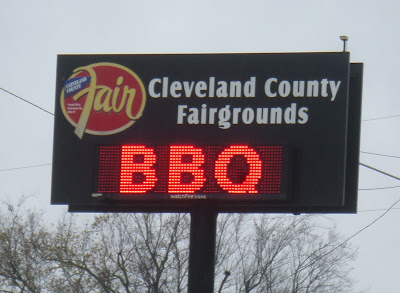 |
| Smoke on the Harbor has become a premier event for the Charleston, SC, area. |
Hosted by the Charleston Harbor Resort & Marina, the throwdown takes place at the scenic Lookout Pavilion on Patriots Point across Cooper River from historic downtown Charleston. At the pavilion, a virtual village is created with the cooking teams, vendors, and displays. The village comes complete with even a kid drop-off zone that lets parents enjoy food, music and drink while someone else watches their children.
 |
| The kid zone was popular with parents. |
Unusual for a barbecue cookoff is the cocktail competition that is part of the throwdown – the barbecue scene continues to change with a younger generation that wants to enjoy more than simply smoked meat. George Dickel Tennessee Whiskey is a sponsor of the throwdown, and its presence is very prominent.
 |
| A member of the Coastal Smoke team prepares garnish for its entries. |
The throwdown also raises awareness of hunger in the area and includes a food drive that benefits the East Cooper Meals on Wheels. A donation of five canned goods cuts the admission price of $10 in half.
 |
| The cooking team Fire and Smoke Shak sets up early. |
After conducting the inaugural event in 2012, the organizers have sought KCBS sanctioning, which significantly raises the competitive level of the cooking teams. Because I’ve been a judge at each of the subsequent events that have been sanctioned, I’ve observed how important sanctioning is to the throwdown’s success. At the opening meeting of the judges with the KCBS contest representative before the competition begins, the organizers specifically mention the value of sanctioning.
 |
| Judges (including Joyce Gardner, judge coordinator of the Hog Happnin' event in Shelby, NC) take their seats to be ready for the first entries. |
Cooking teams are looking for the slightest advantage to leave as winners. For the 2015 event, 28 teams competed for the total prize purse of $6,150. In addition, an official proclamation by the South Carolina governor declares that the cooking teams are vying for the winning designation as a S.C. State Barbecue Champion.
 |
| A remote-control hog entertained several spectators during the afternoon. |
Returning to the throwdown in Mount Pleasant again was like visiting a favorite place. It’s a great venue, and I hope to return for a fourth time next year.




















































